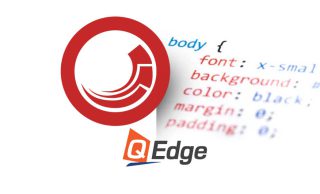An exciting time, full of opportunities to engage customers in new ways, is when a new Sitecore experience is launched. But if done incorrectly, it may become a time- and money-wasting nightmare. By adhering to a skilled guide, you can avoid becoming lost in the Sitecore wilderness.
You can go on a journey that will be successful if you are prepared with tried-and-true travel advice, such as how to pack the appropriate supplies and equipment and how to deal with unforeseen terrain. Continue reading to find out how to successfully adopt Sitecore the first time around. With the right planning, your Sitecore pioneering will result in satisfied users who are enjoying the rich experiences you had in mind from the beginning.
Start with a Sitecore Architecture Document
The first critical step is developing a comprehensive Sitecore architecture document. This document should outline:
- The overall solution architecture and how Sitecore fits within it
- The content architecture including structures of templates, layouts, workflows
- Technical specifications like hosting, security, integration, and caching
Having this architecture document provides alignment across all stakeholders and serves as a blueprint during Sitecore implementation. It establishes clear requirements and expectations upfront to avoid surprises down the road.

Follow Helix Best Practices
Sitecore Helix is a set of conventions and structures for organizing Sitecore solutions. Adhering to Helix design principles and guidelines contributes to a higher quality, more flexible architecture with faster time to market.
Key aspects of Helix include:
- Modular structure following concepts like separation of concerns
- Standardized naming conventions for consistency
- Layered architecture separating business logic, data access, UI, etc.
- Reusable foundation modules and components
- Built with scalability and maintainability in mind
By leveraging Helix recommendations, you can develop a future-proof Sitecore implementation.
Follow General Development Best Practices
In addition to Sitecore-specific Helix guidelines, following other development best practices is critical for a smooth implementation. These include:
- Peer code reviews for all components
- Using established version control workflows and release strategies
- Utilizing configuration transforms for better environment management
- Deploying initially to a staging environment before production
- Automated testing to catch issues early
- Avoiding reinventing the wheel - leverage Sitecore's OOTB features
Careful adherence to these practices ensures high-quality code and a more seamless rollout.
Deploy on Azure PaaS
Beginning with Sitecore 9.0, Sitecore transitioned to a microservices architecture which made on-premise deployment more complex. Luckily, Sitecore provides an Azure Marketplace module that automates launching properly-sized Sitecore environments on Azure PaaS.
Key benefits of deploying on Azure PaaS include:
- Fast and simple deployments using Sitecore's module
- Built-in scaling capabilities to adjust resources based on traffic
- Blue/green deployments for seamless updates using deployment slots
- Avoidance managing infrastructure yourself
For non-cloud environments, having at least one additional CD server allows taking servers temporarily out of rotation for smooth updates.

Size the Environment Appropriately
Properly sizing your Sitecore environment ensures you don't overspend but still maintain performance. Consult Sitecore experts on appropriate sizing for:
- Number of Content Delivery instances
- Resources for all servers like RAM and CPUs
- SQL Server edition - high-traffic sites may need Enterprise not Professional
Experts can determine the optimal cost/performance balance for your unique needs. Undersizing to save money almost always ends up costing more down the line.
Plan for Multilanguage from the Start
Sitecore provides built-in language management capabilities, but implementing a truly multi-lingual site involves more:
- URL structure and handling for SEO and automated language selection
- Language switching options and how they are presented
- Whether to auto-select languages based on GeoIP and allow user overrides
- Where non-editable text like interface text is stored for translation
- Content inclusion/exclusion for different languages
- Search indexing to return language-appropriate results
Considering these requirements upfront allows you to build the proper functionality at the start.
Have a Separate Testing Environment
Having a staging environment for testing is indispensable for Sitecore rollouts. It allows full testing of new features without impacting production. The costs of a poor production deployment far outweigh the extra licensing costs.
Configure Caching Appropriately
Caching can greatly improve Sitecore performance. However, incorrect caching settings can break functionality or display incorrect content. Thoroughly assess caching needs on a per-page or per-module basis. Then apply the proper caching mechanisms and settings, and test rigorously before going live.
Use Automated Deployments
Manual deployments are prone to human errors and inconsistencies. Automated deployment tools help eliminate these issues and enable reliable rollbacks if needed. They also allow reproducible, low-risk deployment processes. Work with Sitecore experts to determine the right automation technologies for your various environments.

How To Implement Sitecore Right the First Time
As you can see, proper Sitecore implementation is complex. Working with qualified Sitecore partners who understand best practices is key to getting it right. Their expertise and experience in implementing hundreds of projects help avoid pitfalls. Investing in the right expertise upfront saves time and money in the long run.
As you can see, correctly deploying Sitecore is a challenging task. Having specialists lead the way is the greatest approach to ensure that it is done correctly.
Our team of Sitecore Certified Architects, Developers, and Support Engineers at QEdge has been installing and supporting Sitecore for more than 15 years. Our Sitecore Implementation Services team can deliver the project on schedule, under budget, and accurately the first time, regardless of whether you want a super-quick Lift-and-Shift or a totally unique solution.







